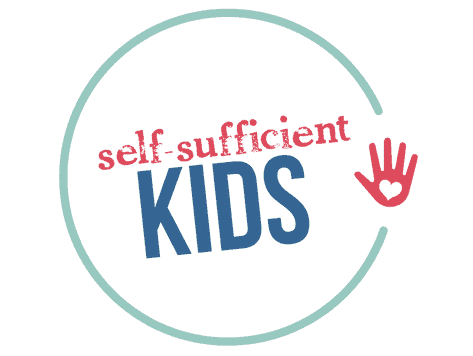8 Fixed Mindset and Growth Mindset Examples and How to Help Kids Improve
These eight growth mindset and fixed mindset examples, featuring kids, can help you determine which mindset your child has and how to help them improve.
** As an Amazon Associate I earn from qualifying purchases. **
“I can’t do it!”
“I’m stupid!”
“Why should I even try?”
Any parent who hears these words from their child inevitably feels helpless knowing their child’s self-view is so negative.
While we can’t change our child’s self-perception for them, there are a number of ways we can encourage our children to take on a more positive view of themselves.
In fact, Stanford University Professor of Psychology Carol Dweck, came to the conclusion, after decades of research, that our mindset – the way we view ourselves – “profoundly affects the way you lead your life” more than our abilities and talent.
She went on to say: “[Your mindset] can determine whether you become the person you want to be and whether you accomplish the things you value.”
When we change our mindset, she goes on to say, we can achieve greater success and have higher self-esteem.
In her book, Mindset: The New Psychology of Success, Dweck coined the terms fixed mindset and growth mindset to explain the dichotomy of the way people think, how these types of mindsets affect them, and how they can improve.
What is a fixed mindset?
Dweck’s book explains that when someone believes their qualities are carved in stone, or rather cannot change, they have a fixed mindset.
People with this mindset believe they have “a certain amount of intelligence, a certain personality, and a certain moral character”. Because these qualities are fixed, people with this mindset feel like they either need to continually prove their worth or simply give up trying.
People with a fixed mindset are likely to think or say these or similar phrases:
- This is too difficult, I might as well give up.
- I’m not as good at this as other people so why even try?
- I’m going to avoid challenges at all costs so I don’t look stupid.
- When someone gives me feedback, I take it personally.
- This task is easy for me so I’ll stop pushing myself to improve so I don’t fail.
- Too many other people are better than me at this so why should I even try?
- I measure success by the ultimate outcome.
- I already know everything there is to know.
What is a growth mindset?
While many of us are trained at an early age to adopt a fixed mindset, Dweck noted that there are certain people who adopt the opposite – what she calls a growth mindset.
People with a growth mindset feel like their current intelligence, personality, and moral character are just starting points. With effort and determination, these qualities can change – they aren’t set in stone. People with a growth mindset are able to achieve more, regardless of their talents, have an innate love of learning, and are shown to have greater resilience and self-esteem.
Dweck says: “The passion for stretching yourself and sticking to it, even (or especially) when it’s not going well, is the hallmark of a growth mindset.”
People with a growth mindset are likely to think or say these or similar phrases:
- This is difficult, but with more effort, I can improve.
- I’m not as good at this as other people…yet.
- I enjoy taking on challenges because I learn from them.
- Feedback from other people helps me learn and grow.
- This task is easy for me but I feel like there are still ways I can improve.
- Other people are very good at this task which means I could be too.
- I measure success by the effort I’ve put into achieving the goal.
- There’s so much that I don’t know and want to learn.
8 fixed vs. growth mindset examples
To put these ideas into context, the following are a few scenarios illustrating when a child could adopt either a fixed or growth mindset.
Since the goal is for parents to be able to encourage a growth mindset in their child, these examples are followed up with advice on how to do so.
When a new activity is challenging
Example: Yesterday afternoon Sasha’s mother tried to teach her how to knit for the first time. Getting stitches on the needle was frustrating and her first few stitches didn’t look like her mother’s.
Fixed mindset: “I’m either good at something or I’m not. My first attempt at this activity didn’t go well so I must not be very good at it.”
Growth mindset: “Even though knitting is challenging, I assume I’ll get better with practice.”
Advice for parents: If your child is adopting a fixed mindset when confronted with a new challenge, share a story about how you found the activity they’re pursuing challenging at first but how you improved over time. Then, ask them if there have been activities that they found difficult at first but now do with ease such as learning addition, learning to read or riding a bike.
When your child has the opportunity to speak up in a group setting
Example: Kayla’s teacher asked her class what the difference is between a noun and a verb.
Fixed mindset: “I know the answer but I’m too nervous to speak up in class.”
Growth mindset: “It’s intimidating to speak up in class but I’m going to push myself outside of my comfort zone and answer.”
Advice: To help your child feel more confident, have them practice speaking up at home. First, make sure that you aren’t unintentionally sending a message that your child’s opinions are unimportant – even when those opinions are expressed in a rude, disrespectful or sassy way (see how to teach respectful communication here). Second, make sure your child gets ample practice at home when the opportunity arises to do a class presentation, for example. Enrolling your child in drama or improv classes can also help them emerge from shyness.
When an academic subject is challenging
Example: Math, particularly long division, is difficult for Austin.
Fixed mindset: “Long division is difficult. I must not be very good at math.”
Growth mindset: “Long division is challenging but each time I practice problems it gets easier. If I keep practicing I should continue to improve.”
Advice: As with anything that’s challenging, it’s always helpful for kids to reflect on activities that used to be difficult for them that are now easy. With academic subjects, emphasize the effort going into your child’s work more than their success rate. By providing extra support and letting your child’s teacher know your child’s mindset, you can work together to help them recognize their progress.
When your child receives constructive criticism
Example: Connor is struggling to kick a soccer ball with accuracy. His coach has given him a few tips about how he could improve his accuracy.
Fixed mindset: “It feels like the coach is criticizing my ability to play soccer. I must be terrible at this game.”
Growth mindset: “I’m glad the coach gave me advice. After more practice, his advice improved my skills.”
Advice: In this case, it would be helpful for the coach to encourage Connor to immediately put his advice into practice and ask Connor if the advice helps. It can be helpful for kids to see results from the negative feedback given and to feel like they’re having a two-way conversation with the person giving the advice. It can also be helpful for adults to ask if the child needs any other support.
When an activity is easy for your child
Example: Hazel found that with minimal effort she could do well in basketball.
Fixed mindset: “I’m already good enough at basketball. I don’t need to put in more effort.”
Growth mindset: “I’m doing well in basketball but with more effort, I could continue to improve.”
Advice: When an activity isn’t very challenging for your child and they show little motivation to improve, add more challenge. In this scenario, Hazel might benefit from joining a more challenging team where her teammates and competitors encourage her to improve. It’s important, however, for a child not to be too challenged and overwhelmed. The same is true with academics – if a child isn’t being challenged enough, perhaps there are after-school opportunities that provide a greater challenge. It could be that your child simply doesn’t realize that greater improvement is possible beyond what they’ve achieved.
When your child compares their success to others
Example: Alma believes that her friend Beatrice is a really good writer.
Fixed mindset: “I’ll never be as good a writer as Beatrice.”
Growth mindset: “If Beatrice can write like that, I could too with more practice and effort.”
Advice: If your child limits themselves in an activity because of the success of others, start by asking your child how that person got to be successful. It may be helpful to note that often there is work that successful people put in behind the scenes that no one else sees. It can also be helpful to review with your child stories of famous people who struggled before attaining success.
When your child makes a mistake
Example: After learning a new math concept, Liam worked on a few practice math problems but made multiple mistakes.
Fixed mindset: “It’s so embarrassing when I make mistakes. I’m going to do whatever I can to hide my mistakes.”
Growth mindset: “Mistakes happen all the time and I can learn from my mistakes.”
Advice: Kids learn a lot from what we model so it can be helpful to normalize mistakes in your family and demonstrate that failures are part of the learning process. Try to find instances, even minor ones, where you make a mistake and acknowledge it to your child. You can then note how it was a great learning opportunity. If your child is discouraged from making a mistake, take on a silly tone and celebrate it by saying: “Yeah! You made a mistake. That means you’re learning!”. Whenever possible, emphasize that mistakes are opportunities to learn.
When your child tries new things
Example: Kayla loves music and her parents suggest she start studying an instrument.
Fixed mindset: “I avoid learning new skills because I don’t like the feeling of failure. I don’t want to attempt to learn an instrument because I’m too afraid I won’t be good at it.”
Growth mindset: “Learning an instrument sounds like a fun challenge.”
Advice: This is also a great opportunity to talk about things that were once challenging to your child but are now second nature – like learning to read or ride a bike. It can also be helpful to imagine with your child what life would be like if they never tried something new. Maybe there’s an activity that they’re passionate about – ask them what their life would be like if they had never taken the first step and tried it.
Additional tips to help your child develop a growth mindset
While we can’t change our child’s mindset for them, we can create a home environment that supports trying new things and normalizes failure. Here are a few suggestions for how to accomplish that:
Model a growth mindset and normalize failure
Our children are constantly looking to us for cues about how to act and think. The more we can demonstrate a growth mindset to our kids, the more likely they’ll adopt one too.
A few ways to do this include:
- Making light of small mistakes like spilled milk or a toothpaste tube left without a cap on
- Sharing stories with your kids about times when you made a mistake and learned from it
- Taking part in a hobby with your child that requires diligence and learning from mistakes (such as knitting, woodworking, etc.)
- Being open with your child when you make a mistake and apologizing for it
Help your child find their passion
Sometimes helping your child find their passion is easier said than done and may not happen quickly. But the sooner your child finds an activity they’re seriously interested in, the more willing they’ll be to make mistakes and learn from them. A passion can provide kids with a sense of purpose and a desire to achieve.
Create a no-judgment zone at home
Often when children are intimidated to do something in a larger setting (at school or on the playing field, for example) they need baby steps to help them feel comfortable. Creating a no-judgment zone in your home will allow your child to practice in a safe space which will build their confidence in a larger setting. A few examples include: presenting a presentation, stating opinions in a respectful way, or practicing an athletic skill.
Encourage rather than praise
Carol Dweck noted that praising our kids, while appreciated by them, can cause them to be externally motivated (think: rewards, grades, approval) which is a hallmark of a fixed mindset. Instead, it’s best to encourage kids by noting their persistence in achieving a goal which promotes more internal motivation.
See related: The Difference Between Praise and Encouragement in Parenting and Why it Matters
Remind your child of the word “yet”
Make it a light-hearted practice in your house to add the word “yet” onto any statement where your child has said they’re incapable of doing something. For example, if your child says “I’m not a good drawer.” Quickly add on “…yet.” This small shift in thought can begin to send the message to your child that with practice, they could achieve the goal.
Read growth mindset books together
Children learn a lot from stories, so reading about characters who experienced adversity and failures, and overcame them, can serve as lessons for how they can think about their own challenges.
See related: 24 Children’s Books That Promote a Growth Mindset
Remind your child of famous people who overcame obstacles
In addition to books, your child may also be inspired by famous people who overcame challenges and obstacles before they were successful. For example, did you know that Albert Einstein’s parents were worried about his development because he didn’t speak until he was four and that a teacher said he’d never amount to anything? Or that Walt Disney’s newspaper editor told him that he lacked imagination and didn’t have good ideas?
See related: 15 Highly Successful People Who Failed Before Succeeding
Progress over perfection
When trying to encourage our kids to have the right mindset, it’s important to recognize that no one has a growth mindset in everything all the time. Your daughter may push herself to improve in ballet but feel discouraged about her ability to read, for example.
Our role, as parents, isn’t to make sure that our kids never acquire a fixed mindset. Instead, it’s to create an environment where a growth mindset is more likely to bloom.
Recognize too that this can take practice. If you’re used to praising your kids and focusing on grades, achievements, or the end result while also condoning mistakes, for example, it will take time to readjust your mindset. So go easy on yourself as you make these changes in your everyday life. With time, you and your child will benefit from the fruits of your efforts.
See related:
The Difference Between Praise and Encouragement in Parenting and Why it Matters
How to Raise Kids Who Are Motivated to Work Hard on Their Own
41 of the Best Growth Mindset Quotes for Kids
What to do next…
1. Subscribe to Self-Sufficient Kids’ email list.
Like what you read here and want to learn more? Every Thursday I’ll send you one parenting tip about raising self-sufficient kids and creating the peaceful relationship you yearn to have with your child. Click here to sign up.
2. Take one of my quizzes!
Find out if you’re raising a self-sufficient kid (click here) or if you’re doing too much for your kids (click here). At the end of each quiz, you’ll be asked to provide your email address to see the results.
3. Get your kids started on chores.
Learn how to get your child started on chores (& keep them motivated + avoid power struggles) by enrolling in my Get Your Kids Successfully Started on Chores course. Click here to learn more and sign up.

About Kerry Flatley
Hi! I’m Kerry, the mother of two girls and a certified parent educator. I believe it is possible for parents to have a supportive, loving, and warm relationship with their kids while raising them to be independent and ultimately self-sufficient. Over the years, I’ve read numerous books and articles that support this belief and I’ve put these ideas into practice with my own kids. Read more about me and Self-Sufficient Kids here.



